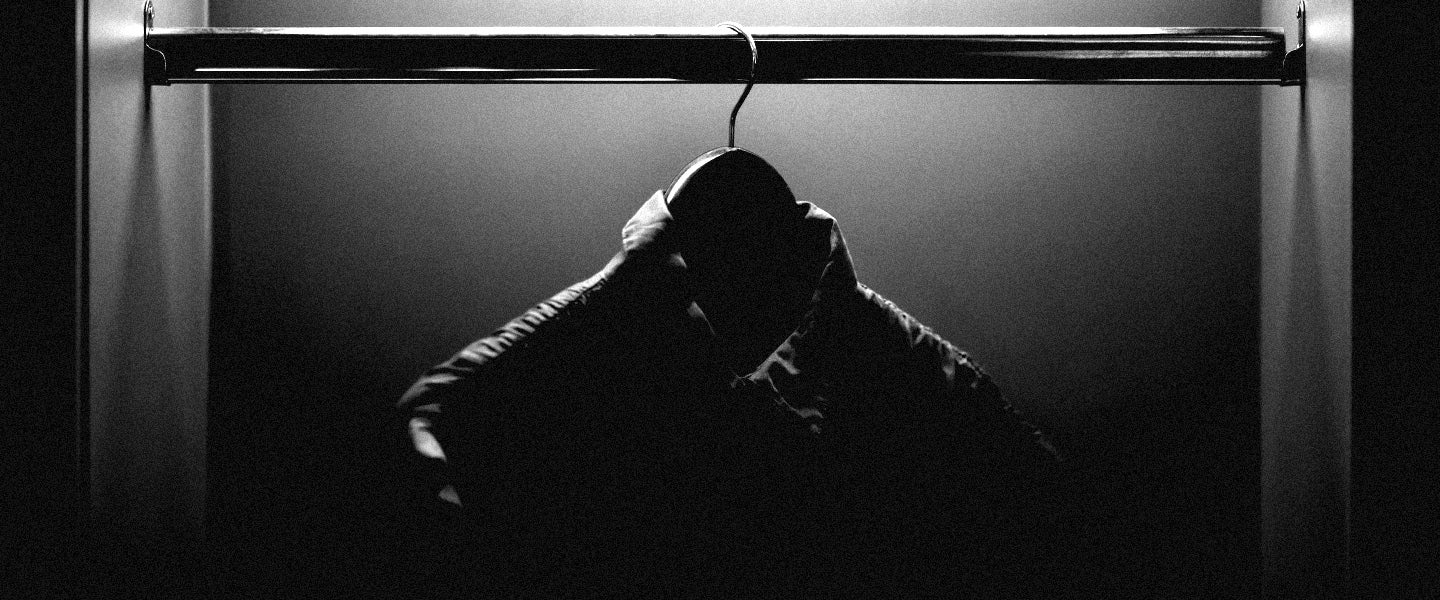After comedian Kelly Bachman called out Harvey Weinstein’s attendance at an open mic night for emerging artists in New York City in October, she published an op-ed in the New York Times about why she spoke up. For a portrait accompanying her piece, she wore a beige dress and green jacket. It was the outfit she wore when she was raped.
“I’m not sure why I still have that, but it felt very punk rock!” Bachman said in a tweet.
In June, the writer E. Jean Carroll posed for New York magazine in a head-to-toe black ensemble. It was the outfit she was wearing when, she writes, Donald Trump assaulted her 23 years ago in a Bergdorf Goodman dressing room. “The Donna Karan coatdress still hangs on the back of my closet door, unworn and unlaundered since that evening,” she writes in her essay. (Carroll is now suing the president, who called her a liar, for defamation.)
Why do survivors hold on to the outfits that give human shape to the worst nights of their life? And what happens, then, when they are able to reclaim these everyday reminders of the trauma they experienced? MEL spoke with three sexual assault and rape survivors in conversations edited for length and clarity.
‘The Police Didn’t Take Them’
Megan Bengard, 39, was raped on January 29th, 2016, by her best friend’s boyfriend. Distraught over another friend who had died earlier in the day, Meghan spent the night on her best friend’s couch. She woke up in the middle of the night to find the boyfriend penetrating her. She was wearing Victoria’s Secret pink flannel pants with white polka dots, a Betsey Johnson maroon-and-black leopard-print flannel top and a light-blue Target shirt that read “Never lose your sparkle.”
It took over a year for the case even to get to the district attorney’s office. I kept thinking, if this would ever go somewhere, I’d still have these clothes. But they never came to get them.
When I reached out to the detective, I asked several times if she needed my clothes. At one point, she said to me it would just hold up the process — because it’s a typical “he said, she said” case, nothing will probably come of it, [the detective implied].
The way they handled the case, I felt revictimized, and because of it, I still have my rape clothes.
I didn’t realize how long of a process it would be anyway. I was raped in January, and they didn’t even speak to [the boyfriend] until October. The more I’ve studied, read and become an expert on some things I don’t wish to be one on, I’ve realized that [rape cases] are just backlogged.
I put them on one more time when I was writing a blog post [for my blog, Cowboys and Crossbones] because I wanted people to see the whole “did she ask for it?” thing. It was right around a year later. They say your body remembers trauma, and I was just a mess.
It didn’t feel like an outfit you’d get raped in, which sounds horrible. I couldn’t have looked more like a shitshow when I went over there with greasy hair, puffy eyes and my glasses on. I don’t think I brushed my teeth. When I put those [clothes] back on, I was like, What the fuck was he thinking? He ended up getting out of bed and coming to me in these pajamas and doing what he did.
It made me feel like I’d been able to move on to put them on again in a way. But it also drove home the point: What the fuck, man?
They are still in my dressing room in a corner. I see them every day. I don’t know. I’m not to point where… It’s not that I don’t want to part with them, but I can’t believe [the police] didn’t take them.
For me now, I want to do something that signifies my letting go. Burn them or rip them up. I don’t know exactly, but do something more symbolic thing for me to know I’ve done what I can to move on and past it. Even though it’s something I’ll carry always. To throw them away in a trash can seems like that’s where my story would go, too.
‘I Have to Wear the Same Uniform’
Alexis, 22, was assaulted by an unknown man while waiting for a ride home from work at an event center in Connecticut. She was wearing her work uniform. Though the clothes from the assault were court-ordered to be destroyed, Alexis still wears a tan polo, black cargo pants and black sneakers every day as part of her job.
I had to wear the same uniform three days later for work. It was really hard at first, and my managers didn’t make me change. I became more comfortable with it, thankfully.
I would look down sometimes and think I saw blood or look in the mirror and see myself the same way I did that night. Now it’s a lot easier. Some days, it’s tough to continue on with my day until I change into my other uniform — I have two different uniforms for different jobs.
Other days — most days to be honest — I’m completely unfazed. Because of the uniform, I get to do something that I love every day. I work and that is the greatest thing ever. It’s empowering to me in a way. I’m very lucky to be able to say I love what I do for my job.
‘I Can’t Get Rid of Them’
Mitchell, 22, was assaulted at 15 by the mother of a friend during a sleepover. At the time, he felt proud of himself for having sex with an older, conventionally attractive woman. It’s only in the seven years since that he’s realized the act was statutory assault. He wore blue jeans, a Levi’s tee and a red flannel.
I don’t think I could forget if I tried. It was cold in his room, and I’ve never been one for pajamas.
For a long time, I guess I felt like what happened to me was a good thing. I know how awful that sounds. I didn’t realize that it was a traumatic experience for me until I started having panic attacks when women who looked like her would talk to me, touch me or even just look at me.
I don’t wear those clothes anymore. I just feel like I’m not allowed to get rid of them. I didn’t grow much, so I’m pretty sure the clothes will still fit me, but I’d never put them on again.
I keep them in my wardrobe. They’re not hung up, though. They’re tucked away in a drawer. I usually see them whenever I happen to clean out my drawers, which doesn’t happen very often.
It feels like it would be “wrong” or “bad” to get rid of them. I’m sorry. That’s about as articulate as I can be. I just feel like I can’t get rid of them.

